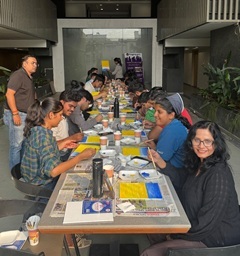The Significance of Diya: Diwali Decoration, Light, Tradition, and Symbolism.
The significance of every Indian festivals


The flickering glow of a diya (traditional oil lamp) holds a special place in the hearts of millions, not just in India but also among people of various cultures around the world with Diwali decorations. These small, often beautifully crafted lamps are much more than just sources of light. They carry profound symbolic and cultural significance, transcending the practical purpose of illumination. In this blog, we delve into the rich traditions and symbolism behind the diya.
Lighting the Darkness:
At its core, the diya serves the practical purpose of providing light. In a world where darkness can represent ignorance, fear, and uncertainty, Diya’s flame represents the eternal light of knowledge and truth that dispels the darkness.
Religious and Spiritual Significance
In Hinduism, the diya is a prominent symbol of spirituality and religious rituals. It is used in various religious ceremonies, particularly during the festival of Diwali. Lighting a diya is believed to invite the blessings of the deities and signifies the triumph of good over evil.
Cultural Traditions
Beyond religious contexts, lighting a diya is a customary practice in various cultural celebrations, such as weddings and festivals. It signifies the beginning of new journeys and the illumination of one’s path in life. The Diya is often seen as an auspicious symbol.
Lighting a Diya can also be a deeply personal and reflective act. It provides a moment of solitude and meditation, allowing individuals to connect with their inner selves, find peace, and express gratitude.
Passing Down Traditions
For generations, the lighting of the Diya has been a way of passing down cultural and spiritual traditions to younger generations. It fosters a sense of identity and belonging to one’s cultural heritage.
Decorative and Artistic Value
Beyond its symbolic meaning, Diyas are often exquisite works of art. Craftsmen and artisans create intricate designs, and many families have cherished heirloom Diyas, making them an integral part of home decor.
In conclusion, the diya stands as a glowing testament to the enduring values and traditions that have been passed down through the ages. Its significance extends far beyond its function as a simple source of light, carrying with it a profound message of hope, unity, and spirituality. Whether you light a diya in a religious ceremony, a cultural celebration, or simply to find inner peace, it serves as a beautiful reminder of the light that can guide us through life’s journeys, both literally and metaphorically.
Image credit:

Create, Connect, Collaborate!
